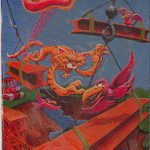2010 Webzen Games Inc.
Platforms: PC and Microsoft Xbox 360
Our next title in the archive was a MMO title that was actually experienced and played by PC owners in closed and open beta releases between 2009 and 2010, but then was shut down completely and disappeared from sight.
Huxley was an ambitious title built in the Unreal 3 engine and was intended for release on both PC and Xbox 360 at the time. The 360 edition was to follow the PC edition after around 6 months, though this later was changed to being put on hold, pending PC sales. Continue reading






